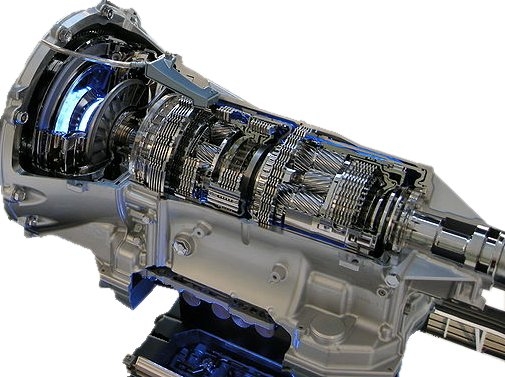
The vital piece of engineering that allows an automatic transmission to function is called a torque converter. This piece of equipment replaces the clutch, which is used in manual-transmission vehicles.
A torque converter leverages the power provided by the car's motor. It is linked to the engine by the transmission shaft. This shaft, however, is not directly connected to the engine. Instead, hydraulic coupling is used to transfer engine power to the transmission.
Inside a torque converter are an impeller, a turbine and a guide wheel. Transmission fluid surrounds these parts.
The turbine and impeller both sit inside a metal housing. They both have blades, which are caught by moving transmission fluid. This causes them to spin without being directly linked. When one part starts to turn, it causes the other part to rotate as well.
The transmission shaft is linked to a set of gears, called the planetary gearset. This usually includes several separate parts. The gear in the center is called the sun gear. Other gears, called planetary gears, revolve around this middle gear. These outside gears differ in size, creating unique gear ratios. These are the gear combinations used when the vehicle shifts.
When the transmission is in neutral, only the center rod turns. The gears are not linked.
When the transmission shifts into first, the first planetary gear begins to move. As the vehicle begins to travel, the transmission moves into second. Higher gear ratios are used the faster the car travels.
In an automatic transmission, sensors decide when a gear shift takes place. This decision is usually linked to the vehicle's revolutions per minute, or RPM. As RPM increases, the transmission shifts.
The shift itself can be performed mechanically or electronically. In mechanical designs, a metal ring tightens to engage gears. As it loosens, the gear is released. Newer models uses electronically controlled servos to engage gears.
The transmission connects to the axles. This is the shaft that physically drives the wheels, converting the rotation of the transmission into forward power and driving the vehicle forward.